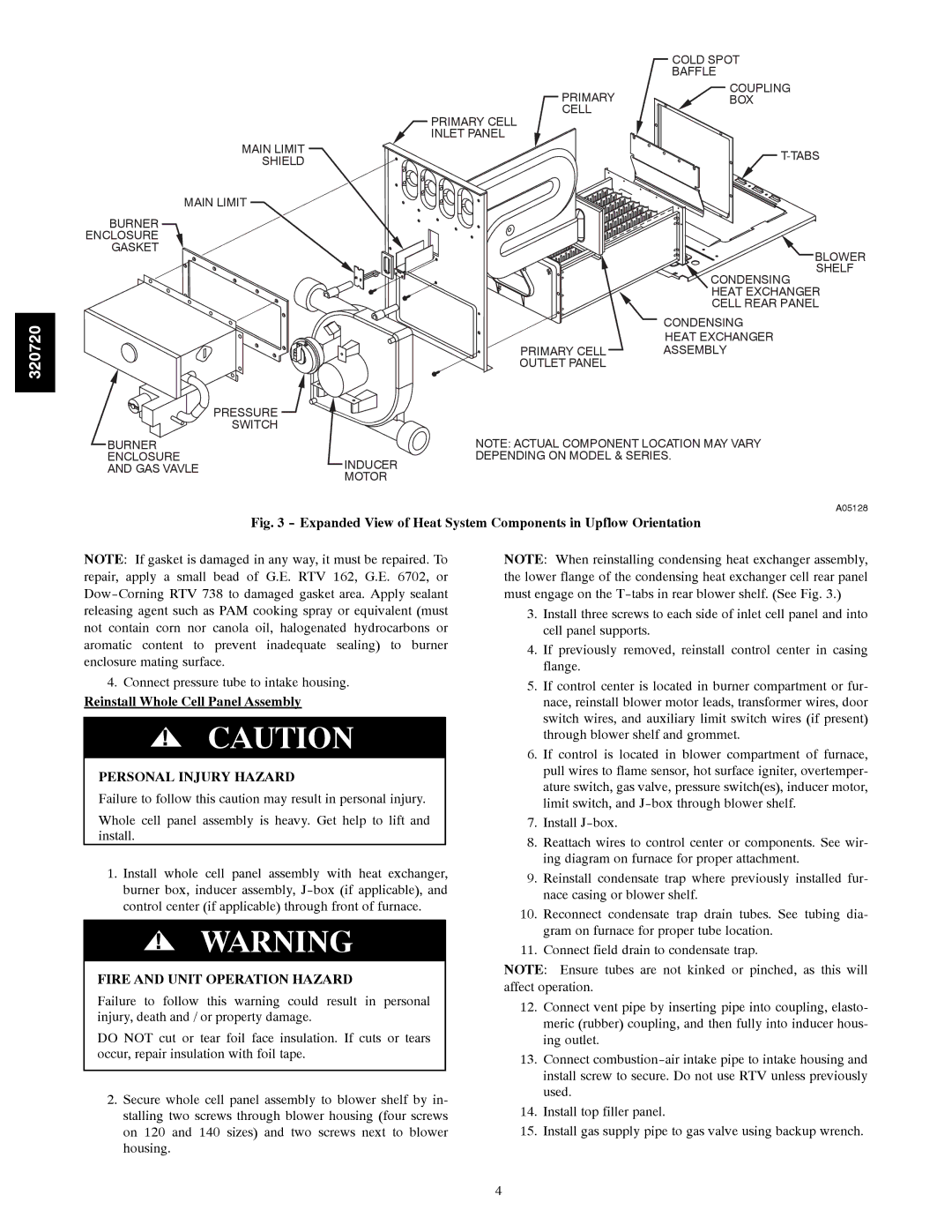320720---751 THRU ---761 specifications
The Carrier 320720---751 THRU ---761 series represents a significant advancement in HVAC technology, offering enhanced performance, energy efficiency, and user-friendliness. These units are designed for commercial and residential applications, making them versatile and suitable for various settings, from small businesses to large industrial facilities.One of the standout features of the Carrier 320720 series is its innovative variable-speed compressor technology. This allows the unit to adjust its output to match the specific cooling or heating needs of the space, providing a more comfortable environment while minimizing energy consumption. By operating at lower speeds most of the time, the units significantly reduce energy costs and extend the lifespan of the system.
Additionally, the series is equipped with advanced inverter technology, which contributes to its energy efficiency. The inverter system smoothly modulates the compressor speed, ensuring optimal performance across different temperature conditions. This not only enhances efficiency but also contributes to notable noise reduction, creating a quieter indoor atmosphere.
Another essential feature of the Carrier 320720 series is its smart thermostat compatibility. This allows for remote monitoring and control via smartphone applications, facilitating easy temperature adjustments and scheduling. The integrated Wi-Fi capability provides users with the convenience of managing their HVAC system from anywhere, promoting energy savings and comfort.
Moreover, the units are designed with a robust, weather-resistant casing that enhances durability and performance in diverse environmental conditions. The energy efficiency ratings of the series comply with the latest industry standards, often exceeding requirements like SEER (Seasonal Energy Efficiency Ratio) and EER (Energy Efficiency Ratio), which translates to significant long-term cost savings.
In terms of environmental impact, the Carrier 320720 series utilizes eco-friendly refrigerants, aligning with global initiatives to reduce harmful emissions and enhance indoor air quality.
In conclusion, the Carrier 320720---751 THRU ---761 series is a cutting-edge solution for efficient heating and cooling. With its variable-speed compressor, inverter technology, smart capabilities, and environmentally friendly design, it ensures that users benefit from comfort, efficiency, and peace of mind, making it a top choice for modern HVAC needs.

